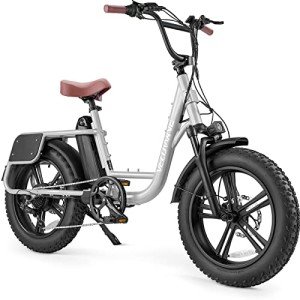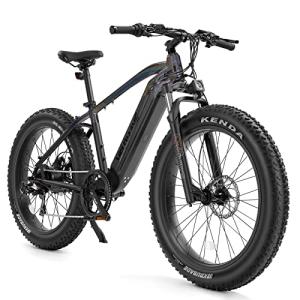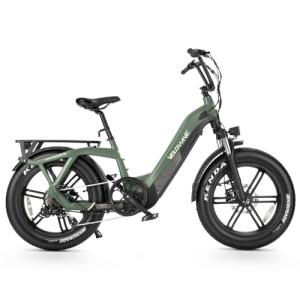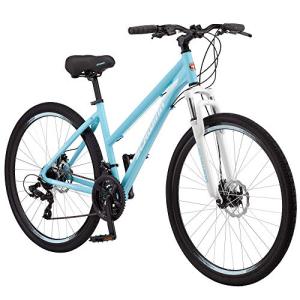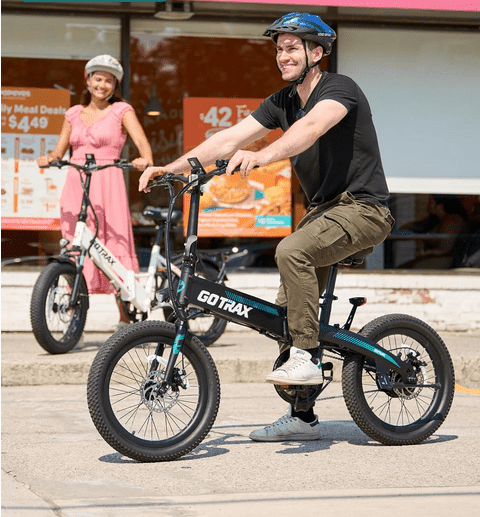Winter Riding Tips: How to Use and Store Your Electric Trike in Cold Weather

I ride an electric trike year-round, but the cold changes everything. Shorter days, salted roads, and lower battery output force me to plan trips with care. I check lights, layers, and tire choice before I roll out.
Battery range falls as temperatures drop, so I bring removable batteries indoors and only charge above freezing. I wipe salt and grit off exposed metal after every ride and treat vulnerable parts with rust protection while avoiding electronic contacts.
I favor fat tires for traction and keep lower pressures when roads are soft. For icy stretches I consider studded options. Strong LED lights and a high-vis vest help me stay visible on dark, busy roads.
Expect less power and shorter range below about -10C, and check brakes for sluggish feel. This guide walks me through gear, on-road technique, and storage so my trike stays reliable all season.
Key Takeaways
- Bring removable batteries indoors and charge at room temperature.
- Wipe salt off after rides and rust-proof exposed metal.
- Use fat or studded tires for better grip on snow and ice.
- Fit bright front/rear LEDs and wear reflective clothing for visibility.
- Store batteries at 40–80% charge and check them monthly.
How I Prep My Electric Trike and Gear for Cold-Weather Rides
Before I roll out, I kit up and do a focused check of the trike so nothing surprises me on slick streets.
Warm layers and safety gear I won’t ride without: I wear a moisture-wicking base, an insulating mid layer, and a windproof shell. I add a helmet‑compatible beanie, insulated gloves with good lever feel, shoe covers, a high‑vis vest, and reflective ankle bands for extra visibility.
Pre‑ride inspection: I wipe salt and grit from the frame, confirm brake feel, test lights, and check battery charge. I spin each wheel to ensure it turns freely and scan exposed components—chain, derailleur or hub gearing, and brake cabling—for ice or contamination.
- Tires: I start with fat tire setups for flotation, lower pressure a few PSI within the safe range, and swap to studded tires for hard-packed ice.
- I plan routes that favor plowed, well-lit roads and avoid bridges or shaded corners that refreeze.
- I carry a small emergency kit: multi-tool, tire levers, a tube or patch kit, mini pump, hand warmers, and a power bank.
Winter Riding Tips: How to Use and Store Your Electric Trike in Cold Weather

My goal on cold days is to keep the throttle steady and the brakes gentle so the trike never surprises me. I ease the throttle when roads look glazed and use small, measured inputs so traction stays steady. I expect reduced battery power and plan each loop with that in mind.
Speed, braking, and turning on slippery roads for a safe ride
I brake early and gently, keeping my weight centered and the trike upright. Hard stops on painted lines or frozen ruts invite a skid, so I allow extra distance to stop. When I turn, I slow before the corner and hold a smooth arc to keep all three wheels sharing the load.
Make yourself seen: lights, clothing, and line choice
I run bright front and rear LED lights, often in a flashing mode during the day. I pair lights with a reflective vest at night and choose a line slightly away from the gutter to avoid slushy, salty puddles and hidden black ice.
Know your limits: cold temperatures, battery range, and brake feel
I treat the battery as temperamental in low temperatures; below about -10C I expect range to fall significantly and plan shorter rides or a mid-ride charge. I check brake feel in the first few blocks—hydraulic levers can feel slower until components warm—and I re-lube exposed components after any slushy ride.
- Conservative speed: ease throttle, avoid sudden inputs.
- Smooth braking: more distance, stay upright.
- Turn setup: slow before the corner, steady arc, minimal steering.
Post‑Ride Care and Storage: Keep Your E‑Trike Clean, Dry, and Powered Right

I treat post-ride care as part of the trip: a fast clean prevents corrosion and keeps my trike ready for the next run. I wipe the frame, fork, and wheels with a soft cloth to remove salt, sand, and other debris. This step takes minutes but stops grit from eating finishes and bearings.
Salt, slush, and debris: wipe down, re‑lube, and rust‑proof key components
I focus on high-risk components. I clean and re-lubricate the chain, gears, and spoke junctions, then apply a light rust‑proof film to exposed metal, avoiding electronics and the display.
I dry the trike after snow or rain and check under fenders and the bottom bracket so hidden debris doesn’t sit for days.
Battery care in winter: room temperature charging and bringing it indoors
I bring the battery inside immediately and only charge at room temperature. Charging a cold pack can harm cells, so I let the pack warm in a warm room before plugging in.
Short‑ and long‑term storage: dry garage tips, 40–80% charge, monthly checks
For long pauses I keep the battery at 40–80% state of charge and set a monthly reminder to check levels. If the battery isn’t removable I store the entire tricycle indoors; otherwise I keep the trike in a dry garage and bring the pack inside.
- I keep a small shelf kit with clean rags, chain lube, rust spray, and a drip tray.
- I do a quick wheel spin and brake squeeze after cleaning to catch drag or noise early.
- Make sure storage spots are off damp concrete and away from wide temperature swings.
Conclusion
A simple routine after every outing keeps my electric tricycle reliable through the season.
I prioritize visibility and route selection to ensure a safe ride on busy, icy roads. I run bright LEDs, wear reflective layers, and pick lines away from slushy gutters.
I favor fat-tire setups for float in snow and switch to studded options when surfaces freeze. I also plan rides around temperature drops and shorten trips when the range falls.
I bring the battery inside, store it at a partial charge, and check levels monthly. I wipe, lube, and rust‑proof fast after salty crossings so my trike and electric trikes stay ready for more time on the road.
With steady prep and simple care, I can keep riding winter routes confidently and roll into spring with a trike that’s dialed in.
FAQ
How do I prep my e-trike and gear for cold-weather rides?
I layer warm clothing that wicks moisture, add an insulated windproof outer layer, and wear thermal gloves and a full-coverage helmet. I use high‑visibility clothing and reflective tape on the trike. Before I ride I check lights, brakes, tire pressure, and clear any frozen components or ice buildup.
What should I inspect on my trike before heading out?
I perform a quick pre‑ride check: test brakes for solid feel, ensure front and rear LED lights work, verify tire pressure (a little lower for better traction if using fat tires), and spin each wheel to listen for frozen bearings or debris. I also confirm fenders and wiring aren’t pinched or iced over.
Which tires work best in snow and slush?
I prefer fat tires for float and traction. In packed ice or very cold conditions I switch to studded tires. For mixed surfaces I slightly lower pressure to increase the contact patch, but I avoid too soft pressure that can pinch the rim or feel sluggish.
How do I ride safely on slippery roads?
I reduce speed, brake earlier and more gently, and use engine braking if available. I steer smoothly, avoid sudden lane changes, and aim for a wider turning radius. I pick lines that avoid black ice and deep slush, and I keep a greater following distance from other vehicles.
How can I stay visible during short winter days and low visibility?
I mount bright LED lights front and rear, add flashing side lights or wheel reflectors, and wear high‑vis clothing with reflective strips. I avoid riding in drivers’ blind spots and choose well-lit roads when possible.
How does cold affect my trike’s battery and range?
Cold temperatures reduce battery capacity and output, so I expect a lower range and less available power. I keep the battery warm before a ride, charge it indoors at room temperature, and avoid deep discharge in freezing conditions.
What’s the best way to charge and store the battery in winter?
I bring the battery indoors and charge it at room temperature. For storage I keep the battery at 40–80% state of charge, avoid fully drained cells, and cycle it monthly. If I must leave the battery on the trike in a garage, I use a weatherproof cover and a smart charger rated for cold conditions.
How do I care for salt, slush, and road debris after a ride?
I rinse the trike with fresh water when possible, dry metal parts with a clean cloth, and re‑lube the chain and pivot points with a winter-grade lubricant. I pay special attention to brake calipers, fasteners, and exposed electrical connectors to prevent corrosion.
What are short‑term and long‑term storage tips for an e-trike?
For short breaks I store the trike in a dry garage, maintain 40–80% battery, and keep tires off very cold concrete if possible. For long-term storage, I clean and dry the trike, inflate tires to recommended pressure, remove the battery, and store it indoors, and check the trike monthly for pests, flat spots, or battery depletion.
When should I skip a ride because of conditions?
I don’t ride when roads are untreated and ice-covered, when visibility is severely reduced, or when temperatures threaten my battery and safety. If I feel uncertain about traction, braking, or route safety, I choose an alternate transport option that day.
DISCLAIMER
This document is provided for general information purposes only and should not be relied upon as providing legal advice, technical, or specific operational guidance to the reader, whether as to the practices described in the document or the applicable legal requirements and regulations. Just Electric Bikes expressly disclaims any responsibility for liability arising from or related to the use or misuse of any information in this document.

